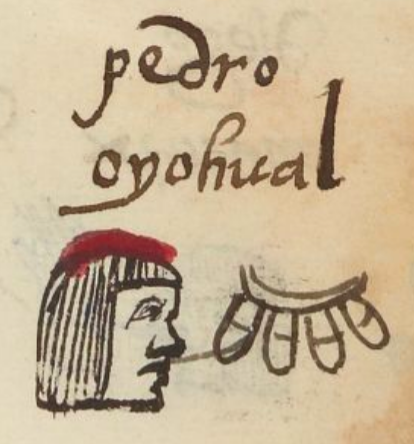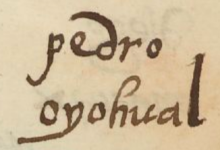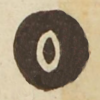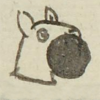Oyohual (MH499r)
This black-line drawing of the simplex glyph for the personal name Oyohual ("Jingle Bells," attested as a man's name) shows a frontal view of a curving string with four jingle bells (oyohualli) that were typically tied to legs for dancing. Warriors were known to wear them.
Stephanie Wood
While this particular glyph for oyohualli is somewhat simplified compared to others, these bells still look much like the autonomous-era copper and gold bells that have been found in archaeological sites, and not like the European-style bells (such as the tzilin shown below) that would come to hang in churches after colonization.
Stephanie Wood
pedro
oyohual
Pedro Oyohual
Stephanie Wood
1560
Jeff Haskett-Wood and Stephanie Wood
cascabeles, campanillas, campanas, pinjantes, metales, suenan, jingle bells, nombres de hombres

oyohual(li), jingle bells, often worn by dancers/warriors, https://nahuatl.wired-humanities.org/content/oyohualli
Campanilla o Cascabel
Stephanie Wood
Matrícula de Huexotzinco, folio 499r, World Digital Library, https://www.loc.gov/resource/gdcwdl.wdl_15282/?sp=77&st=image
This manuscript is hosted by the Library of Congress and the World Digital Library; used here with the Creative Commons, “Attribution-NonCommercial-ShareAlike 3.0 License” (CC-BY-NC-SAq 3.0).










